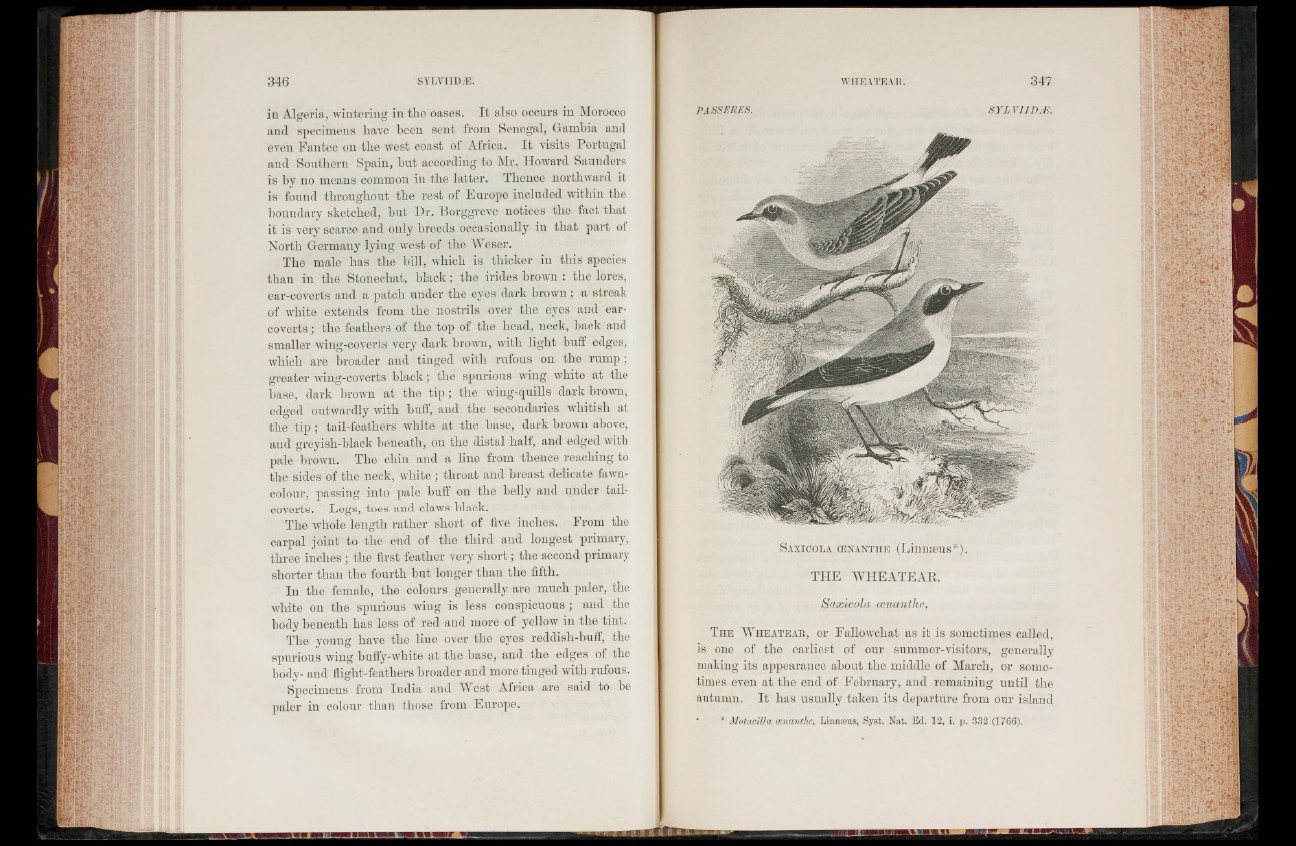
in Algeria, wintering in the oases. I t also occurs in Morocco
and specimens have been sent from Senegal, Gambia and
even Fantee on the west coast of Africa. I t visits Portugal
and Southern Spain, hut according to Mr. Howard Saunders
is by 110 means common in the latter. Thence northward it
is found throughout the rest of Europe included within the
boundary sketched, but Dr. Borggreve notices the fact that
it is very scarce and only breeds occasionally in that part ol
North Germany lying west of the Weser.
The male has the bill, which is thicker in this species
than in the Stonecliat, black; the irides brown : the lores,
ear-coverts and a patch under the eyes dark brown; a streak
of white extends from the nostrils over the eyes and ear-
coverts ; the feathers of the top of the head, neck, back and
smaller wing-coverts very dark brown, with light buff edges,
which are broader and tinged with rufous on the rump ;
greater wing-coverts black; the spurious wing white at the
base, dark brown at the t ip ; the wing-quills dark brown,
edged outwardly with buff, and the secondaries whitish at
the tip ; tail-feathers white at the base, dark brown above,
and greyisli-black beneath, 011 the distal half, and edged with
pale brown. The chin and a line from thence reaching to
the sides of the neck, white ; throat and breast delicate fawn-
colour, passing into pale buff 011 the belly and under tail-
coverts. Legs, toes and claws black.
The whole length rather short of five inches. From the
carpal joint to the end of the third and longest primary,
three inches; the first feather very sh o rt; the second primary
shorter than the fourth but longer than the fifth.
In the female, the colours generally are much paler, the
white on the spurious wing is less conspicuous ; and the
body beneath has less of red and more of yellow in the tint.
The young have the line over the eyes reddish-buff, the
spurious wing huffy-white at the base, and the edges of the
body- and flight-feathers broader and more tinged with rufous.
Specimens from India and West Africa are said to be
paler in colour than those from Europe.
S axícola cenanthe (Linnaeus*).
THE WHEATEAR.
Saxícola cenanthe.
T h e W h e a t e a e , or Fallowchat as it is sometimes called,
is one of the earliest of our sunnner-visitors, generally
making its appearance about the middle of March, or sometimes
even at the end of February, and remaining until the
autumn. I t has usually taken its departure from our island
* Motacilla cenanthe, Linngeus, Syst. Nat. Ed. 12, i. p. 332 (1766).